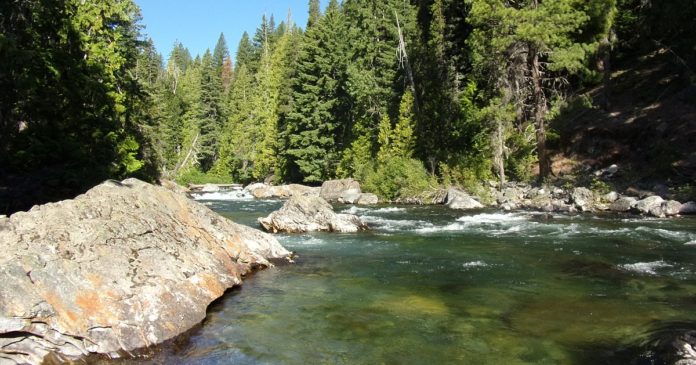With the snow melted in the mountains it’s the perfect time to lace up your hiking boots and hit the trail with a rod in hand to target trout. Offering lightly pressured waters and a good way to cool off from the dog days of summer, fishing alpine lakes and forested streams can be very rewarding.
Starting with mountain lakes, there are several things you can do that will help you catch trout.
• Avoid fishing at the first beach or lake access point where the trail meets the lake. This is the one place that often sees significant fishing pressure, not to mention hikers and their dogs, who might want to go swimming here after a long hike on a hot summer day.
• Fish the area around the outlet and inlet of the lake. This is where trout often congregate, because there is a lot of food for them in these areas.
• Use a spinning rod rigged up with a castable, clear (water-filled) bobber and a fly behind a 3-foot leader. Dry flies, nymphs and streamers will all work. Most of the time, the trout are in deeper water, too far from shore for most anglers with fly rods to cast to.
• Use weighted spinners or spoons. A lot of spinners and lures aren’t heavy enough or built well for casting far, especially on a breezy day. Aerodynamic spinners I like to use include the Mack’s Lure Promise Keeper spinner (1/8 oz.) and the Worden’s Rooster Tail spinner (1/6 oz.). When it comes to spoons, I’m a big fan of DarDevle spoons (especially the classic red and white one) and the Acme Kastmaster (blue and chrome is a go-to pattern for alpine lakes fishing).
• Avoid using bait. These lakes are pristine and beautiful places. Nobody wants to see PowerBait stains on rocks or empty foam worm cartons floating around the lake. Besides, artificial lures work just fine and are much better to use if you are releasing the trout you catch. If you really want to make sure those trout are released unharmed, use lures modified with pliers to have one or two barbless hooks instead of a barbed treble hook.
• Consider using a float tube to really get out deep where many of the fish are found. Wilderness Lite is a company specializing in packable, ultra-lightweight float tubes and fins that together weigh less than 5 pounds. The float tubes are easily inflated once you reach the lake. Check out their product line at www.wildernesslitefloattubes.com.
Mountain trout fishing doesn’t just apply to lakes: Streams are worth fishing, too. Many trails follow creeks and small rivers, and if you are willing to go just a short way off-trail, you’ll often find great pools and runs that hold plenty of trout. The trout are generally not huge in these waters, but they can be plentiful.
I will often use a short ultra-lite spinning rod (5 ½ to 6 feet long) spooled with 4- to 6-pound line. Small spinners work very well in these situations. #0 or #1 Mepps spinners with chrome, brass, and copper blades, as well as Mepps Black Fury spinners, are all very effective. I will generally fish with the bright chrome spinners in low light or murky water conditions. I’ll use the copper and black-bladed spinners when the sun is bright on the water. The gold or brass blades? Consider that a great all-round choice!
These small streams are also perfect for fly-fishing. Take a light, 3-weight rod with floating line and work the pools you’ll find in these creeks and rivers. Two of my favorite dry flies for these waters are a Parachute Adams or Royal Wulff, the latter being a favorite for cutthroat trout in particular. During the late summer, there’s no need to bring waders, just take off those hiking boots, slip on a pair of sandals and enjoy a walk-and-wade day of fishing. The feel of the cold water on your legs on a hot summer day is half the fun of fishing these waters.
Credit: Source link































